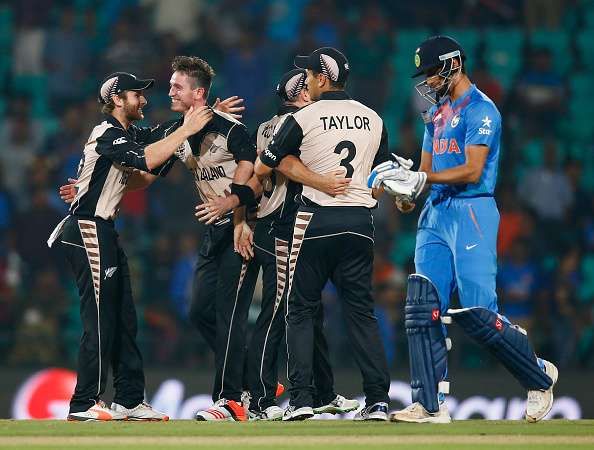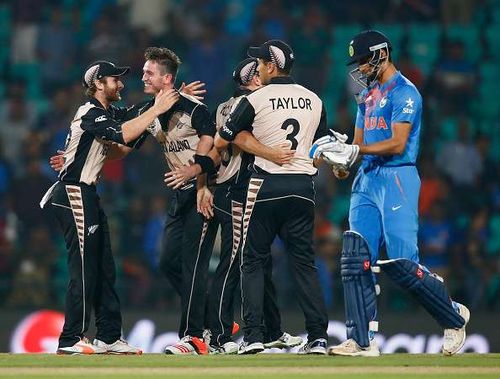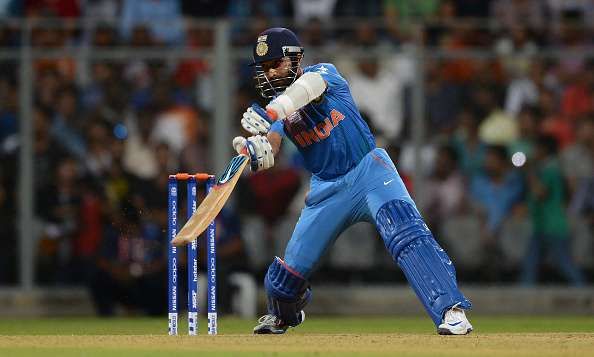
ICC World T20 2016: Lessons India should learn from the defeat against New Zealand

The shellacking India received against New Zealand has to be one of the upsets of the tournament. This was not how the script was meant to go. Indians are not meant to be defeated on their own turf especially when they have ratcheted up ten wins out of their last eleven.
Perhaps the most appropriate thing here would be a reformulation of an old adage,” Overconfidence kills, absolute overconfidence kills absolutely”. While accusing Indians of absolute overconfidence is perhaps a bit too harsh their performance yesterday night does call for some slicing and dicing.
I have never been a fan of the doctoring India gives to its pitches but it has to be said that black caps gave the men in blue a good reason to reflect upon this strategy. In the first place, rank turners should not be used for T20 cricket as it defeats the very purpose of the game. Hugely turning pitches make batting a gamble and not a true test of ability making Indian batting, their strong suite, impotent. While home advantage is a good thing, what the Indian team should not forget is that poison is nothing but medicine in large doses.
Indian bowling has to be flexible
Let us start with the bowling first. While most of the bowling acquitted itself well, on such a pitch it was still insufficient. Ashwin went for two sixes and conceded 32 runs on a rank turner specially designed for him. This does not augur well for India.
As I explained in my last post on this site, on such pitches it was a foolish strategy to go with Pandya, a fast bowler and an even faster hitter of the ball. On such a slow pitch the only fast bowlers who can survive are either electrically fast or have bamboozling variations, neither a particularly strong suit for him.
It has to be said here that not making adjustment to the team composition according to the pitch is a foolhardy strategy. While everyone accused New Zealand of doing a poor impersonation of India before the match by not playing according to their strength they quietly proved the statement that conditions are king.
In hindsight, it can be said that India should have gone with three spinners. Although hindsight is a poor judge, India has to be flexible in its setup while deciding on the team for any game. In a game as specialized as Cricket, where everyone’s trade is unique, teams should be fearless enough to pick players who are particularly suited for the pitch and the opposition on any given date.
The batting has a problem

Indian batting has been India’s strongest suit since time immemorial although their performance yesterday would not have hinted the same to any casual observer. While there was a collective failure of batting and for once, Kohli and Dhoni could not transform India’s fate for the better, I find it more a failure of tactics than anything else. As I alluded to in my last post, on such a pitch India’s best batsman other than Kohli would have been Rahane.
But India’s fixation with hitting has blinded them to the fact that Yuvraj is not the same player he once was. Superlative innings can win you a match but to win tournaments you require consistency which the middle order sorely lacks with Raina also not in the pink of his form. During the last twelve months, they collectively average a shade under 24, not a great number by any stretch of imagination.
Simply put, Indian selectors should always select Rahane unless the pitch is too docile in which case they can play a big hitter such as Yuvraj. Even today Indians consider dropping a player as an affront to him but such a mentality has to go if we are to become a powerhouse in the true sense of the word. Tactical flexibility is absolutely essential in the modern data-driven world where if you don’t adopt properly you are crushed by those prepared to take advantage.
Hardik Pandya, although a good player, is not technically competent enough to fill in as a batsman in the team on such pitches. With his bowling being little more than useless on such pitches his contributions were unsurprisingly unremarkable in the match. He would provide a good option on pitches where there is no turn but on square turning pitches it would be in the mutual interest of everyone that he is replaced by either a batsman or a spinning all-rounder.
Rohit Sharma’s patchy record in chases is also a cause of concern for India. While he can be absolutely devastating when India bat first he should definitely up his game while the team is chasing. Perhaps like he reinvented himself as an opener after initial struggles we’ll soon see him make the transition to a better chaser at least.
His opening partner, Shikhar Dhawan has had too many failures in the last twelve months to still maintain his position as India’s preferred choice. He should either buckle up or be fired if the next two innings also end in disappointing failures as the last few have.
In spite of the huge defeat India received at the hands of the New Zealanders, this should be the catalyst for fundamental changes in team selection and tactics which would hold them in better stead. I would not be surprised if India take this defeat as added motivation towards their second World T20 crown.
They are a quality team with world class players but they should understand that the difference between the good and the great can be a single run. To fight for that run is what the great teams do well.